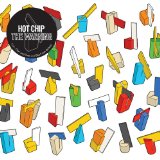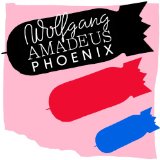Listview
A listview is coded as a simple unordered list (ul) or ordered list (ol) with a data-role="listview" attribute and has a wide range of features.
Read-only, unordered
A listview is a simple unordered list containing linked list items with a data-role="listview" attribute.
- Acura
- Audi
- BMW
- Cadillac
- Ferrari
Read-only, ordered
Lists can also be created from ordered lists (ol) which is useful when presenting items that are in a sequence such as search results or a movie queue.
- Acura
- Audi
- BMW
- Cadillac
- Ferrari
Linked
List items with links are styled as button.
Inset
Adding the data-inset="true" attribute to the list (ul or ol), applies the inset appearance which is useful for mixing a listview with other content on a page.
Filter
To make a list filterable, simply add the data-filter="true" attribute to the list. The framework will then append a search box above the list and add the behavior to filter out list items that don't contain the current search string as the user types. The input's placeholder text defaults to "Filter items...". To configure the placeholder text in the search input, use the data-filter-placeholder attribute. By default the search box will inherit its theme from its parent. The search box theme can be configured using the data attribute data-filter-theme on your listview.
Filter reveal
The filter reveal feature makes it easy to build a simple autocomplete with local data. When a filterable list has the data-filter-reveal="true" attribute, it will auto-hide all the list items when the search field is blank. The data-filter-placeholder attribute can be added to specify the placeholder text for the filter. If you need to search against a long list of values, we provide a way to create a filter with a remote data source.
List dividers
List items can be turned into dividers to organize and group the list items. This is done by adding the data-role="list-divider" to any list item. These items are styled with the bar swatch "b" by default (blue in the default theme) but you can specify a theme for dividers by adding the data-divider-theme attribute to the list element (ul or ol) and specifying a theme swatch letter. You can override the divider-theme for a specific divider by adding the data-theme attribute to the list item.
Autodividers
A listview can be configured to automatically generate dividers for its items by adding a data-autodividers="true" attribute to any listview. By default, the text used to create dividers is the uppercased first letter of the item's text. Alternatively you can specify divider text by setting the autodividersSelector option on the listview programmatically. This feature is designed to work seamlessly with the filter.
Count bubbles
To add a count indicator to the right of the list item, wrap the number in an element with a class of ui-li-count. The theme for count bubbles can be set by adding the data-count-theme to the list and specifying a swatch letter.
Icons: Standard
The default icon for each list item containing a link is carat-r. To override this, set the data-icon attribute on the desired list item to the name of a standard icon. To prevent icons from appearing altogether, set the data-icon attribute to "false". With a bit of custom styling it's also possible to use third party icons.
Icons: 16x16
To use standard 16x16 pixel icons in list items, add the class of ui-li-icon to the image element and insert 16x16 icons as img tags inside the list items.
Thumbnails
To add thumbnails to the left of a list item, simply add an image inside a list item as the first child element. The framework will scale the image to 80 pixels square.
Split buttons
To make a split list item, simply add a second link inside the li. To adjust the split button icon, add the data-split-icon attribute to the listview . Add the data-icon attribute to individual list items for more control. The theme swatch color of the split button defaults to "b" (blue in the default theme) but can be set by specifying a swatch letter with the data-split-theme attribute at the listview level or for individual splits with the data-theme attribute at the link level.
-

Broken Bells
Broken Bells
Purchase album -

Warning
Hot Chip
Purchase album -

Wolfgang Amadeus Phoenix
Phoenix
Purchase album
Purchase Album?
Your download will begin immediately on your mobile device when you purchase.
Buy: $10.99 CancelFormatted content
To add text hierarchy, use headings to increase font emphasis and use paragraphs to reduce emphasis. Supplemental information can be added to the right of each list item by wrapping content in an element with a class of ui-li-aside
- Friday, October 8, 2010 2
-
Stephen Weber
You've been invited to a meeting at Filament Group in Boston, MA
Hey Stephen, if you're available at 10am tomorrow, we've got a meeting with the jQuery team.
6:24PM
-
jQuery Team
Boston Conference Planning
In preparation for the upcoming conference in Boston, we need to start gathering a list of sponsors and speakers.
9:18AM
- Thursday, October 7, 2010 1
-
Avery Walker
Re: Dinner Tonight
Sure, let's plan on meeting at Highland Kitchen at 8:00 tonight. Can't wait!
4:48PM
Theme
The list item color scheme can be changed to any button color theme swatch by adding the data-theme attribute to the listview or to individual list items. The theme for list dividers can be set by adding the data-divider-theme to the list. The theme for count bubbles can be set by adding the data-count-theme to the list.
To specify the swatch for the split button, add the data-split-theme to the list and specify a swatch letter. This attribute can also be added to individual split inside list items by adding a data-theme attribute to specific links (see second list item). The icon for the split button can be set at the list level by adding the data-split-icon.
The white icon sprite is used by default in the theme. Adding the ui-alt-icon class to the list switches to the black sprite and gets rid of the dark disc.
Forms
Any form element can be placed inside a listview for a grouped presentation.
Collapsible listview
This is an example of a listview wrapped in a container with data-role="collapsible".
Grouped collapsible with listviews
You can also use listviews inside a collapsible set (accordion) to visually group the list and ensure that only a single item can be open at once.
Filtered list
Formatted text
- Friday, October 8, 2010 2
-
Stephen Weber
You've been invited to a meeting at Filament Group in Boston, MA
Hey Stephen, if you're available at 10am tomorrow, we've got a meeting with the jQuery team.
6:24PM
-
jQuery Team
Boston Conference Planning
In preparation for the upcoming conference in Boston, we need to start gathering a list of sponsors and speakers.
9:18AM
Thumbnails and split button
Full width collapsible listview
Setting data-inset="false" on a collapsible or a collapsible set makes the collapsible full width (non-inset), like a full width listview.
Calendar
- Friday, October 8, 2010 2
-
Stephen Weber
You've been invited to a meeting at Filament Group in Boston, MA
Hey Stephen, if you're available at 10am tomorrow, we've got a meeting with the jQuery team.
6:24PM
-
jQuery Team
Boston Conference Planning
In preparation for the upcoming conference in Boston, we need to start gathering a list of sponsors and speakers.
9:18AM
- Thursday, October 7, 2010 1
-
Avery Walker
Re: Dinner Tonight
Sure, let's plan on meeting at Highland Kitchen at 8:00 tonight. Can't wait!
4:48PM
- Wednesday, October 6, 2010 3
-
Amazon.com
4-for-3 Books for Kids
As someone who has purchased children's books from our 4-for-3 Store, you may be interested in these featured books.
12:47PM

 France
France Germany
Germany Great Britain
Great Britain Finland
Finland United States
United States